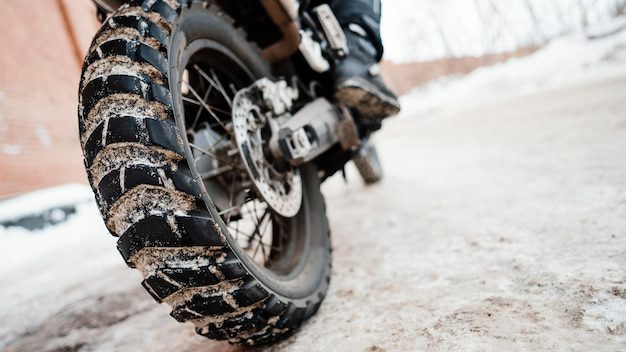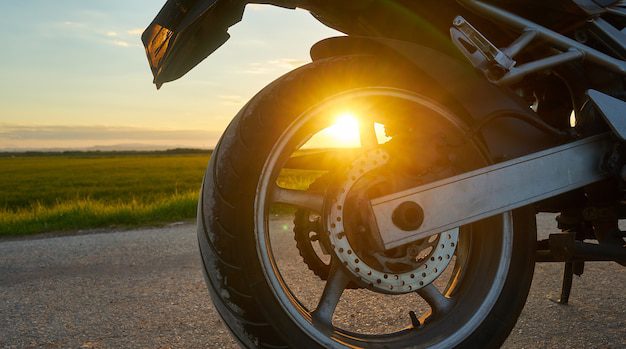Which tyre is best for motorbike?
Choosing the right tyre for your motorbike is essential for both safety and performance. With so many options available on the market, it can be overwhelming to determine which tyre is the best fit for your specific needs. This article aims to provide you with a comprehensive guide to help you make an informed decision.
Factors to Consider
When selecting a motorbike tyre, several factors need to be taken into account:
- Type of Riding: Are you primarily riding on the road, off-road, or a combination of both?
- Weather Conditions: Do you mostly ride in dry conditions, wet conditions, or a mix of both?
- Bike Specifications: What is the make and model of your motorbike? Different bikes have different tire requirements.
- Budget: How much are you willing to spend on your tyres?
Types of Tyres
There are several types of motorbike tyres available, each designed for specific purposes:
- Sport/Performance Tyres: These tires offer excellent grip and handling, making them ideal for high-performance bikes and riders who enjoy spirited riding on the road.
- Cruiser/Touring Tyres: Designed for comfort and long-distance touring, these tyres provide a smooth ride and enhanced stability.
- Off-Road/Adventure Tyres: If you frequently ride off-road or enjoy adventure riding, these tyres are built to handle challenging terrain and provide superior traction.
- Commuter Tyres: For everyday commuting and general road use, these tyres offer a balance between performance and durability.
Key Features
When comparing different tyre options, consider the following features:
“The tread pattern affects how the tyre performs in different weather conditions. Wider grooves are better for dispersing water on wet roads.”
| Feature | Description |
|---|---|
| Tread Pattern | The pattern affects how the tyre performs in different weather conditions. Wider grooves are better for dispersing water on wet roads. |
| Compound | The rubber compound used in the tyre influences grip, longevity, and performance characteristics. |
| Size | The tyre size must match your motorbike’s specifications. Consult the manufacturer’s guidelines or your owner’s manual. |
| Load and Speed Ratings | These ratings indicate the maximum load capacity and speed capability of the tyre. Ensure they meet or exceed your bike’s requirements. |
Professional Advice
It is always recommended to consult with a professional tyre specialist or your motorbike manufacturer to get personalized advice based on your riding style, bike specifications, and budget. They can provide expert recommendations tailored to your needs.
Ultimately, the best tyre for your motorbike depends on your individual requirements and preferences. Consider the type of riding you do, the prevailing weather conditions, and your budget constraints. By carefully evaluating these factors, you can make an informed decision and choose the best tyre that offers optimal performance and safety.
Can I have 2 different tyres on a motorcycle?
When it comes to motorcycle tires, there are many factors to consider, including tread pattern, size, and brand. One common question that arises is whether it’s possible to have two different types of tires on a motorcycle.
Understanding the Importance of Matching Tires
Matching tires on a motorcycle is crucial for maintaining stability, performance, and safety. The front and rear tires work together to provide balance and control, especially during cornering and braking.
While it may be tempting to mix and match different tires, it’s generally recommended to stick with a matching set. This ensures consistent handling characteristics and maximizes the potential of your motorcycle.
The Consequences of Using Different Tires
Using two different tires can lead to imbalances in grip, handling, and overall performance. The differences in tread pattern, rubber compounds, and sidewall construction can adversely affect how the motorcycle behaves on the road.
Reduced traction: Different tires may have varying levels of grip, especially in wet or slippery conditions. This can compromise your ability to maneuver safely.
Inconsistent handling: Mixing tires with different profiles or sizes can result in unpredictability when cornering or changing direction. This can impact stability and control.
Uneven wear: Tires wear at different rates depending on the riding style and conditions. Mixing tires with different wear levels can lead to premature tire failure and compromise safety.
Expert Advice
“For optimal performance, it’s best to use a matching set of tires on your motorcycle. This ensures consistent handling characteristics, predictable performance, and maximum safety on the road.” – Motorcycle expert
Is it OK to plug a motorcycle tyre?
Introduction
Plugging a motorcycle tyre is a common practice among riders, but is it actually safe and recommended? Let’s delve into this topic and explore the pros and cons of plugging a motorcycle tyre.
The Pros of Plugging a Motorcycle Tyre
Plugging a motorcycle tyre can be a convenient and cost-effective solution for repairing small punctures or nails that may be causing slow leaks. It saves time compared to removing the tyre and replacing it with a new one, and it is generally less expensive. Additionally, plugging a tyre allows riders to quickly get back on the road without the need for extensive repairs.
The Cons of Plugging a Motorcycle Tyre
While plugging a motorcycle tyre can be a temporary fix, it is important to note that it is not a permanent solution. Plugs are typically considered a temporary fix because they do not address the underlying cause of the puncture and may not provide the same level of safety as a professional repair or replacement. Plugs can also potentially fail over time, leading to a sudden loss of air pressure while riding.
It is crucial to understand the limitations and potential risks of plugging a motorcycle tyre.
Professional Opinion
According to many experts and tyre manufacturers, plugging a motorcycle tyre is generally not recommended. They argue that plugs do not provide the same level of safety and durability as a proper tyre repair or replacement. The Motorcycle Industry Association (MCIA) also advises against using plugs, recommending a professional repair or replacement instead.
“Plugging a motorcycle tyre may seem like a quick and easy solution, but it can compromise your safety on the road. It is always best to have a tire inspected and repaired by a professional.” – MCIA
Alternatives to Plugging
If you encounter a puncture or damage to your motorcycle tyre, it is advisable to seek professional assistance. A qualified tyre specialist can properly assess the condition of the tyre and recommend the best course of action. They may suggest a patch repair, which involves removing the tyre from the rim and repairing the damage from the inside, offering a more reliable and long-lasting solution.
- Seek assistance from a qualified tyre specialist.
- Consider a patch repair for a more reliable solution.
- Replace the tyre if necessary.
Conclusion
In conclusion, it is generally not recommended to have two different tires on a motorcycle. While it may seem like a cost-saving or convenient option, the consequences can outweigh any potential benefits in terms of safety and performance. Always consult your motorcycle manufacturer’s recommendations and seek advice from experts before making any changes to your motorcycle’s tires.
While it may be tempting to plug a motorcycle tyre as a quick fix, it is important to prioritize safety and follow the recommendations of professionals. Plugging should be considered a temporary solution and it is always best to consult with a tyre specialist to determine the most appropriate course of action for your specific situation. Remember, your safety on the road should never be compromised.



